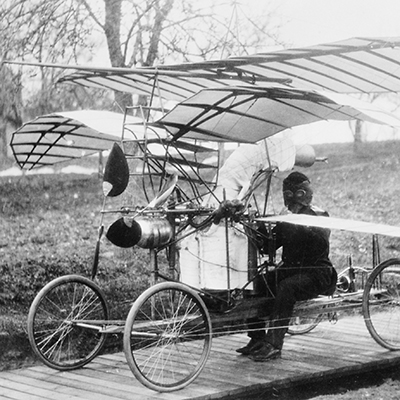Carl Richard Nyberg – the Blow torch
Dreams have long been the driving force for many inventors. One who may have dreamed more than others was Carl Richard Nyberg, the inventor of the blowtorch and nearly obsessed with the dream of building the first working airplane.

Carl Richard Nyberg was born in 1858 and invented the blowtorch in 1882, which allowed him to amass a fortune.
The blowtorch, also known as the soldering lamp, is a heating device that emits a focused beam of heat. The lamp requires liquid fuel, such as kerosene.
In the late 1800s, Nyberg worked at J. Eriksson’s Mechanical Workshop in Stockholm, where gas stoves were manufactured. These stoves were unregulated, sensitive to pressure, and could be dangerous. This gave Nyberg the idea for the blowtorch.
The blowtorch had a bowl that surrounded a tube leading to the burner. Alcohol was poured into the bowl and ignited, causing the kerosene or alcohol in the lamp’s container to gasify as it flowed out of the lamp. The blowtorch was an excellent source of heat that burned with a concentrated and very hot flame. Nyberg also wanted to reduce the risk of explosions. Therefore, the blowtorch had a pin that was soldered to its indented bottom and a conical tip that protruded through the lamp’s lid. If the pressure in the lamp became too high, causing the bottom to be pressed down, the pin would be pulled down and function as a safety valve that reduced the pressure.
In 1881, Carl Richard Nyberg obtained a patent for his blowtorch, which quickly became very popular. He started manufacturing and selling the lamps himself. Five years later, he met the wholesaler Max Sievert, who took over the sales. The blowtorch became an even greater success, and Carl Richard Nyberg became wealthy from his invention.
Failed Dreams of Flight
In 1878, Carl Richard Nyberg designed a helicopter-like flying machine that he was unable to keep in the air for long. The “aircraft problem,” as he called it, then became his all-consuming dream to solve. He went about it very methodically, hiring two prominent experts for measurements before building the machine he dreamed of being the first pilot of, called Flugan.
Carl Richard Nyberg used a steam engine to power the flying machine. He had specially designed the steam engine to be as lightweight as possible. Weight was perhaps the biggest problem for those who had attempted to build a steam-powered aircraft before Carl Richard Nyberg.
Flugan was so light that its weight per horsepower was even less than that of the Wright brothers’ airplane, but it was not enough. Due to the steam engine, Flugan still had insufficient engine power. It could lift itself but not a pilot. Carl Richard Nyberg did not win the race to conquer the air.
Carl Richard Nyberg never got off the ground and ended his attempts in 1909. He passed away at his home on Täcka udden in 1939. There still stands a hangar he built during his aviation experiments. The remains of Flugan are also in the collections of the National Museum of Science and Technology, testifying to a technological race that ultimately led to our ability to fly today.
Last updated 25 July 2023.
